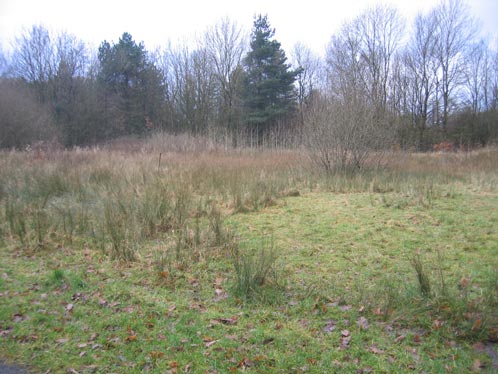Global Climate Change in a Geological Context
Our planet’s climate has changed dramatically over deep time. The immense geological record of our Earth and the fossils contained within certain strata point to several periods of dramatic mass extinction. The Earth’s climate does change, it rarely remains stable for any length of geological time. Whilst writing this piece and glancing out of the window it is difficult to believe that just a few thousand years ago our part of the world was covered in ice sheets.
Cheshire Covered in Ice
Around 20,000 years ago, a mere blink in geological time, this portion of Cheshire was covered in ice approaching 1,000 metres thick, to the east, the prominent, coarse grained sandstones are testament to a vast expanse of desert that existed some 270 million years ago.
Typical Scrubland in Cheshire after the Last Ice Age

A wet and boggy landscape. Cheshire at the end of the last Ice Age. Our world today is faced with global climate change.
Picture credit: Everything Dinosaur
Global temperatures have also fluctuated widely. The average global temperature in the first few years of the 21st Century is around 14-15 degrees Celsius, although there is plenty of geological evidence to suggest average global temperatures were much higher and lower in the past. However, the rate of change is the concern.
Scientists and politicians are becoming increasingly aware that human activity has interrupted the natural, planetary circle and that human-induced global warming has serious implications for the stability of the Earth’s climate and the changes, if allowed to take place, could lead to the extinction of our species and a lot of other species too. 2015 is on course to become the warmest year in recorded history. Thirteen of the fourteen warmest years were recorded in this Century. Fortunately, measures are being put in place to try to minimise the effects of global warming.
COP 21
World leaders, politicians, scientists, environmentalists and lobbyists are gathering in Paris for the start of the global warming conference (COP 21). COP 21 stands for the 21st Conference of the Parties to the United Nations Framework Convention on Climate Change. A convention signed in 1994 commits the majority of the countries of the world to work together to lessen the impact of global warming.
That long winded title was created in Rio in 1992 where countries concerned about the impacts of climate change came together under the United Nations to do something about it.
The key aim is the “stabilisation of greenhouse gases in the atmosphere at a level that would prevent dangerous anthropogenic interference with the climate system”.
The term anthropogenic refers to something that has been caused by or relates to our species (Homo sapiens).
Global Climate Change
The conference will run from November 30th to December 11th and its aim is to fundamentally re-order the economies of our planet to permit the reduction of greenhouse gasses such as carbon dioxide that contribute to the global warming of our world.
When the Earth warms about 2°C above pre-industrial revolution times, scientists say there will be dangerous and unpredictable impacts on our climate system. Our planet is already half way to that danger point.
So the purpose of the Paris conference is to work out a way of limiting emissions of greenhouse gases, while allowing countries to continue to grow their economies, and providing assistance to the least developed and those most affected by rising temperatures.
We wish all those taking part in the conference ever success with this enormous undertaking. Let us hope that common sense, mediation and a common sense of purpose win the day. It is not too late, but the window of opportunity is closing. Our species is not capable of managing the Earth’s climate, however, we are capable of putting in place changes that will minimise our effect on the planet and the natural order. Ice sheets will one day return to north-western England, deserts will also be here once again, just like they were millions of years ago.
Aiming to Build up a Consensus
Our planet’s climate changes, what we must do is to have the courage to build a consensus to help minimise our impact and to reduce the speed of change. Failure to do so is not an option and the geology of our planet will bear testimony to how successful we prove to be in this undertaking.
Everything Dinosaur acknowledges the help of the BBC in the compilation of this article.
Visit Everything Dinosaur’s award-winning website: Everything Dinosaur.






Leave A Comment